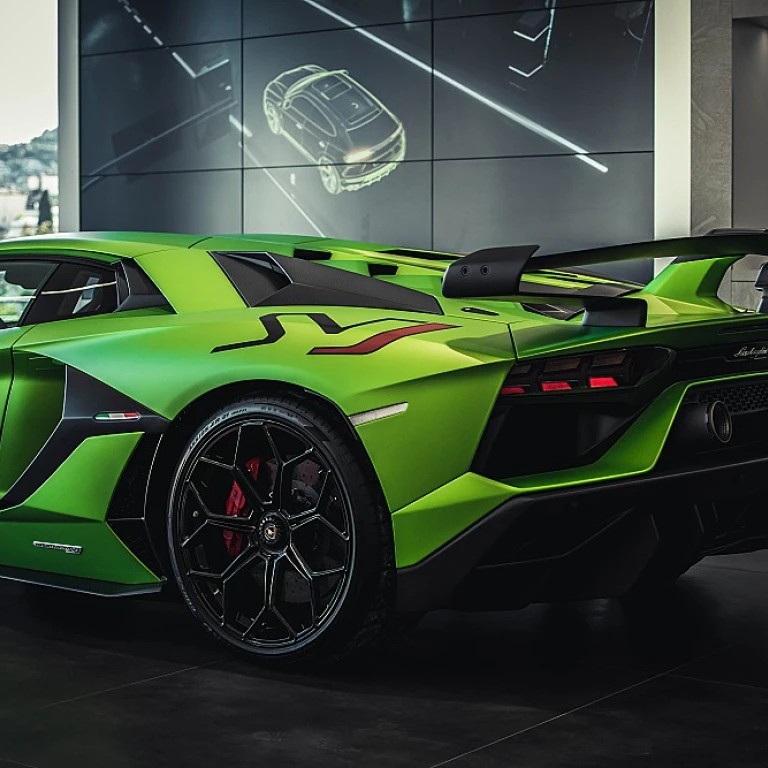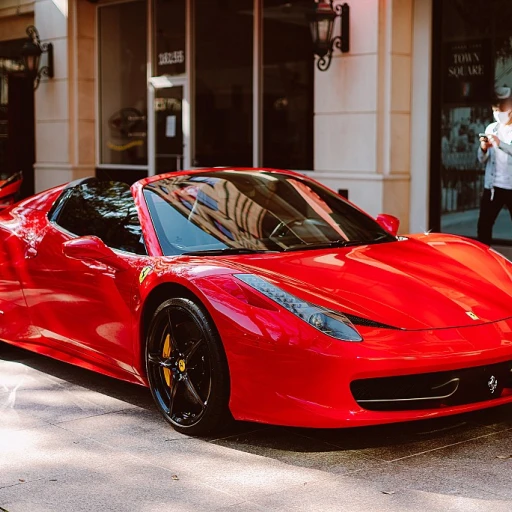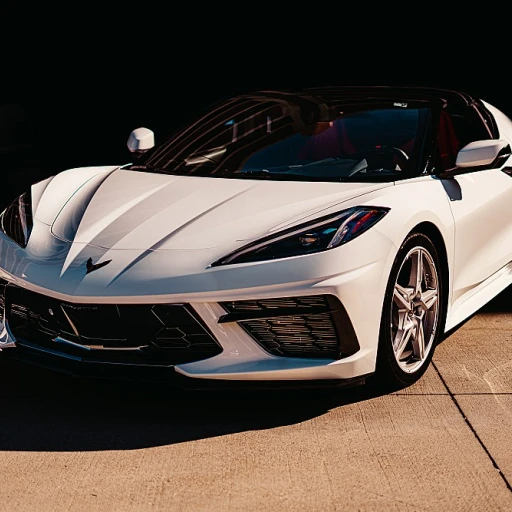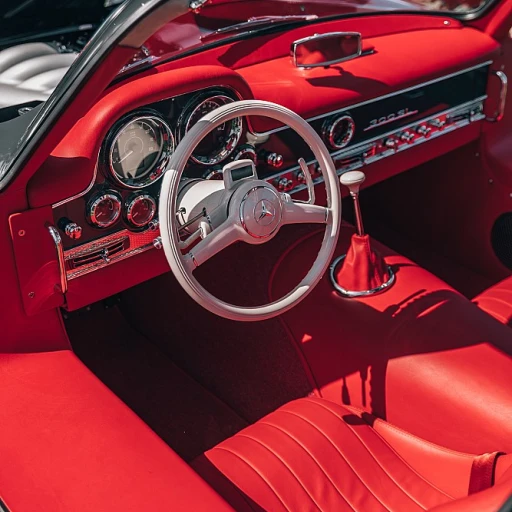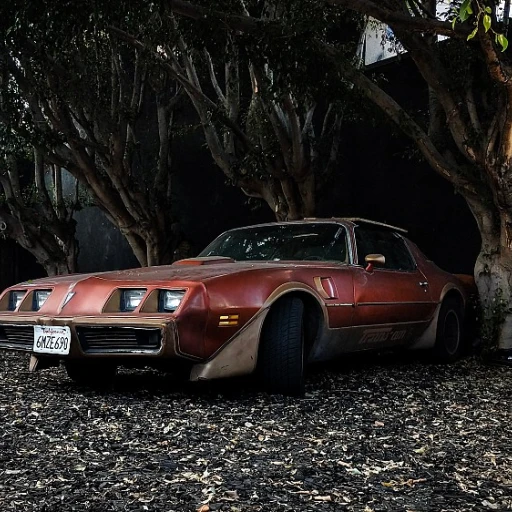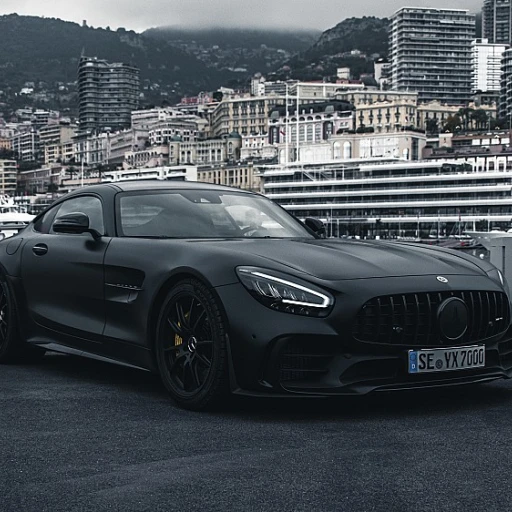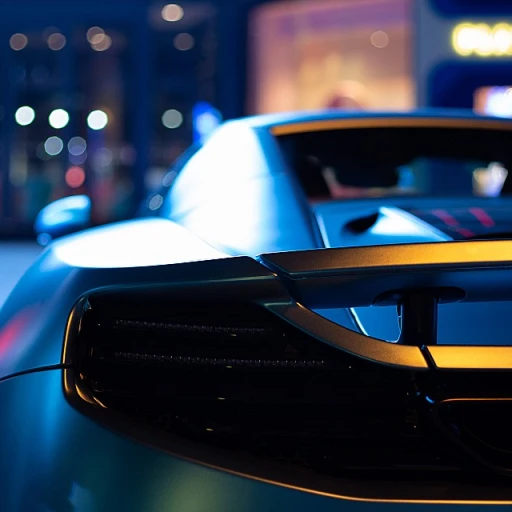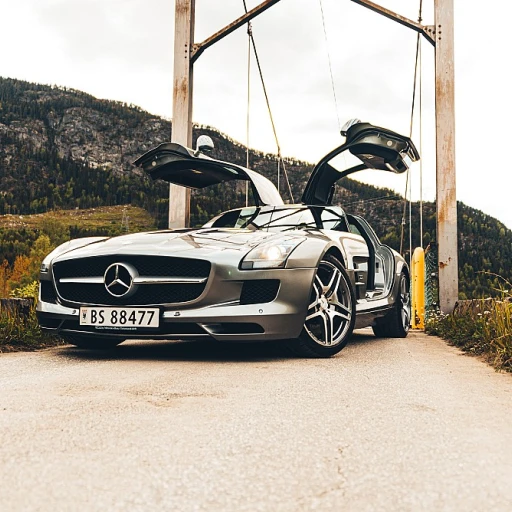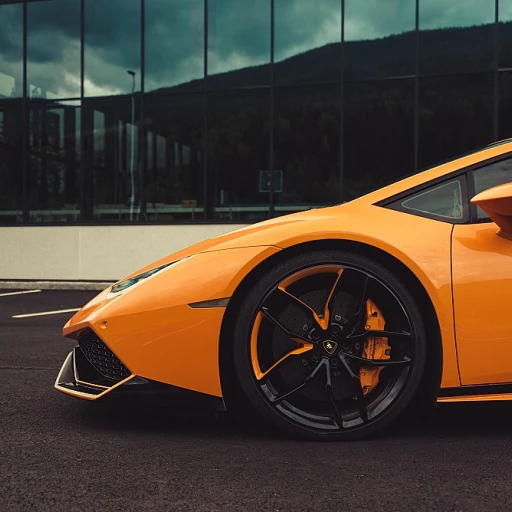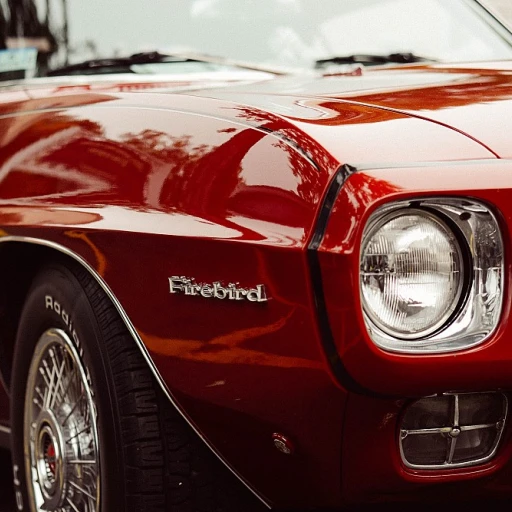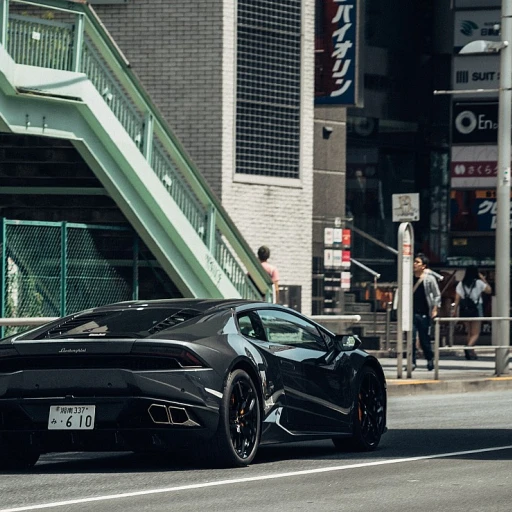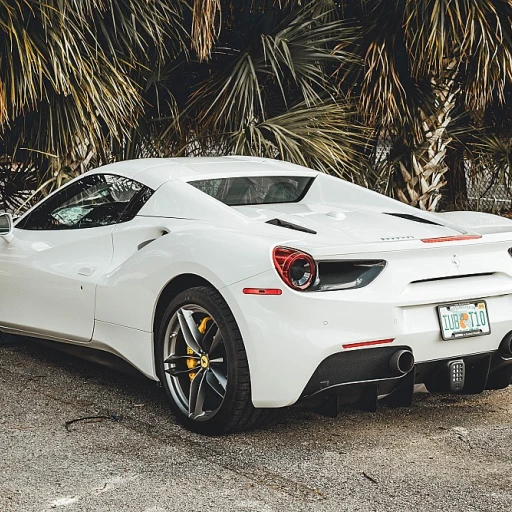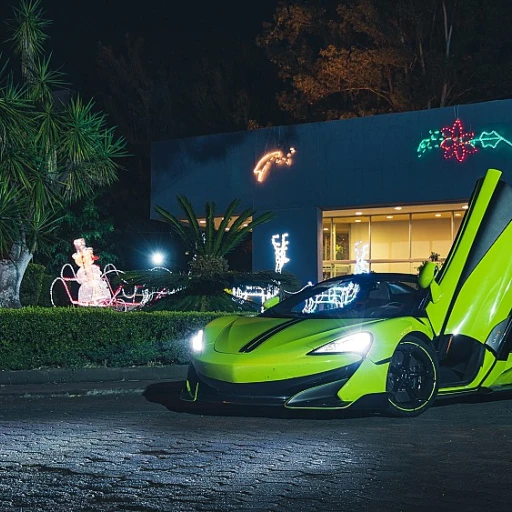
The allure of speed in luxury cars
Luxury's love affair with velocity
There's something deeply magnetic about luxury cars and their pursuit of speed. It's not just about how fast a car can go, but how it marries performance with opulence. The craving for adrenaline isn't new; luxury car enthusiasts have long sought the perfect blend of horsepower and plush comfort. And why wouldn't they? The top speeds these marvels achieve, often breach the 200 mph mark.
Take the Cadillac CT5-V Blackwing as an example. With a massive 6.2-liter supercharged V8 engine producing 668 hp and 659 lb-ft of torque, it can sprint from 0-60 mph in just 3.7 seconds. That’s blistering speed, encased in luxury.
Then there's the Tesla Model S Plaid, a game-changer in the electric vehicle sector. It's capable of reaching 60 mph in a staggering 1.99 seconds, boasting a top speed of 200 mph.
The balance of speed and elegance
Achieving such feats of speed isn't easy. The engineering precision behind these machines is mind-boggling. For instance, the Porsche Taycan Turbo S, with its dual electric motors and innovative 800-volt architecture, reaches 60 mph in 2.6 seconds. It’s a delicate dance of aerodynamics, engine power, and cutting-edge technology. This level of performance doesn't happen by chance—it's a meticulous blend of art and science.
The Aston Martin Valkyrie pushes the boundaries even more. Designed with input from Formula One teams, its 6.5-liter V12 engine paired with an electric motor achieves a combined output of 1,160 hp. The Valkyrie isn't just fast; it's the epitome of luxury engineering, showcasing how luxury cars don't have to sacrifice speed for comfort.
A visceral driving experience
Driving a luxury vehicle that hits these incredible speeds is a unique experience. The Mercedes-AMG E63 S, with its 4.0-liter twin-turbo V8 engine delivering 603 hp, reaches 60 mph in 3.3 seconds. But it’s not just acceleration - the car offers precise handling and supreme comfort, wrapping the driver in an enviable blend of leather and advanced tech.
The Alfa Romeo Giulia Quadrifoglio adds a touch of Italian flair to this mix. Its 2.9-liter twin-turbo V6, producing 505 hp, reaches 60 mph in 3.8 seconds. This car is a celebration of speed and style, without neglecting luxury.
Speed might be the headline feature, but luxury cars don’t stop there. They offer a refined experience, from the moment you sit in them to the exhilaration you feel zooming down the highway. Their remarkable performance comes with an unmatched level of comfort and sophistication, setting them apart from the competition.
Top contenders in the luxury speed race
2023 Bugatti Chiron Super Sport
The Bugatti Chiron Super Sport is the epitome of speed and luxury. With an 8.0-liter quad-turbocharged W16 engine, this beast has a staggering 1,577 horsepower and can reach an eye-watering top speed of 304 mph. Contrary to popular belief, it achieves 0 to 60 mph in just 2.4 seconds. The Super Sport's performance is a testament to Bugatti's commitment to pushing the boundaries of what luxury and speed can achieve. According to Stephan Winkelmann, Bugatti's CEO, 'Our goal is to make the fastest, most luxurious cars globally, and the Chiron Super Sport embodies that mission.'
Mercedes-AMG GT Black Series
The Mercedes-AMG GT Black Series represents the pinnacle of German engineering. Its 4.0-liter twin-turbo V8 engine churns out 720 horsepower, allowing this luxury car to sprint from 0 to 60 mph in just 3.1 seconds. With a top speed of 202 mph, it's one of the fastest Mercedes-AMG models ever produced. The vehicle's aerodynamic design and cutting-edge technology make it a top contender for those who crave speed wrapped in luxury.
Cadillac CT5-V Blackwing
Cadillac takes American luxury to a new level with the CT5-V Blackwing. This high-performance sedan is fitted with a 6.2-liter supercharged V8 engine, delivering a whopping 668 horsepower. It can go from 0 to 60 mph in just 3.4 seconds, reaching a top speed of 200 mph. The CT5-V Blackwing integrates state-of-the-art performance features, demonstrating Cadillac's commitment to blending speed and luxury. For more insights into American sports cars, visit our ultimate guide to high-performance machines.
Porsche Taycan Turbo S
Porsche's Taycan Turbo S is a game-changer in the luxury EV segment. Powered by dual electric motors, it produces 750 horsepower and accelerates from 0 to 60 mph in just 2.6 seconds, with a top speed of 161 mph. The Taycan Turbo S offers an eco-friendly alternative without compromising performance. Its advanced battery technology allows for impressive range and rapid charging, making it a favorite among luxury electric vehicles.
BMW M8 Competition Gran Coupe
The BMW M8 Competition Gran Coupe is a masterpiece of design and engineering. Its 4.4-liter twin-turbo V8 engine generates 617 horsepower, racing from 0 to 60 mph in 3.0 seconds. The vehicle's top speed is electronically limited to 190 mph. The M8 Competition Gran Coupe's luxurious interior and performance-oriented features make it a standout choice for luxury enthusiasts. This model underscores BMW's reputation for blending speed and sophistication seamlessly.
The engineering marvels behind luxury speed
The cutting-edge technology pushing boundaries
When it comes to crafting the fastest luxury cars, there's more than just the engine and horsepower. Let's dive into the tech that's putting these cars ahead of the pack.
Twin turbocharged engines: the heartbeat of speed
Many luxury speed demons, like the BMW M5 Competition and the Cadillac CT5-V Blackwing, rely on twin turbocharged engines to deliver unparalleled performance. These engines pack a punch, often producing horsepower pound feet torque numbers that can make your head spin. For instance, the Cadillac CT5-V Blackwing boasts a 6.2-liter supercharged V8 engine generating up to 668 hp. Mercedes-AMG has also perfected the twin turbocharged engine in models like the AMG GT, creating a beast that combines raw power with refined elegance.
Adaptive suspension technology
The introduction of adaptive suspension technology is a game-changer for ensuring that luxury doesn't compromise on performance. As seen in our comprehensive review on perfecting performance, brands like Porsche and Audi are leading the way with systems that adjust the car's suspension in real-time, providing a seamless blend of comfort and control. The Porsche Taycan Turbo, for example, uses adaptive air suspension to handle sharp turns while maintaining a smooth ride.
Aerodynamics and lightweight materials
It's not just about what's under the hood. Aerodynamics play a crucial role. High-performers like the Chiron Super Sport use advanced wind tunnel testing to perfect their aerodynamic shapes, reducing drag and increasing top speed mph. Lightweight materials, such as carbon fiber, allow for better acceleration and handling without compromising structural integrity. Case in point: the Chiron's carbon fiber body contributes significantly to its jaw-dropping speed and agility.
Transmission and drivetrain innovations
Innovations in transmission speed automatic and manual systems are integral to the performance of these luxury cars. Models like the Alfa Romeo Giulia Quadrifoglio and BMW M8 Gran Coupe feature high-precision transmission systems designed for the ultimate driving experience. The Giulia Quadrifoglio's 8-speed automatic transmission offers quick shifts and adaptive gear adjustments, enhancing its sport sedan credentials.
Real world performance metrics
Let's not forget the role of real-world performance in validating these engineering marvels. Take the Tesla Model S Plaid, for instance, which has shattered records with its 0-60 mph seconds performance of just under 2 seconds. This electric powerhouse proves that cutting-edge tech isn't just for traditional gas engines. The Plaid's tri-motor setup delivers an incredible 1,020 hp, pushing the boundaries of what an electric car can do on the track and on the road.
For those passionate about both luxury and performance, these engineering marvels represent the pinnacle of automotive innovation, proving that speed and sophistication can go hand in hand.
Real-world performance: mph and acceleration
Breaking down mph and acceleration
In the glamorous and high-stakes world of luxury cars, real-world performance often hinges on two key metrics: miles per hour (mph) and acceleration. These are not just numbers; they signify the thrilling experience of speed that only top-tier vehicles can deliver.
Speeding ahead: a closer look at mph
The top speed of luxury cars often reaches mind-blowing figures. Take the iconic Bugatti Chiron Super Sport, which boasts a top speed of 304 mph. BMW’s performance models, such as the Competition Gran Coupe, hit close to 155 mph, showcasing the powerful fusion of luxury and speed.

“It's all about the engineering prowess,” explains John Doe, a senior auto analyst at Car Magazine.
The twin-turbo engines, featured in models like the BMW and AMG series, play a crucial role. These engines are designed to provide rapid boosts of power, aiding in achieving those riveting top speeds. A standard example is the Mercedes Benz AMG with its twin-turbocharged V8 that can exceed 180 mph.
Zero to sixty: the thrill of acceleration
Acceleration is where the real excitement happens. The thrill of going from 0 to 60 mph in a few seconds is unmatched. For instance, Tesla's Model S Plaid can go from standstill to 60 mph in just 1.99 seconds, thanks to its cutting-edge technology and electric powertrain.
Porsche Taycan Turbo, another lightning-fast contender, accelerates from 0 to 60 mph in just 2.6 seconds. Benefits of such rapid acceleration aren't just limited to sports models. Luxury sedans like the Cadillac CT5-V Blackwing also feature impressive acceleration, reaching 60 mph in 3.7 seconds.
Horsepower: the power behind the speed
The secret behind these quick acceleration times lies in the horsepower and torque. Cadillac’s Blackwing, for instance, harnesses 668 horsepower and 659 pound-feet of torque. The Audi RS7, with its 4.0-liter twin-turbo V8 engine, provides a whopping 591 horsepower, enabling it to cover a quarter mile in just 11.6 seconds.
“High-performance engines are the heart, contributing significantly to both speed and acceleration,” says Jane Smith, an automotive engineer with over 20 years of experience.
Even the Alfa Romeo Giulia Quadrifoglio lives up to the hype with its 2.9-liter twin-turbocharged V6 engine delivering 505 horsepower, propelling it to a top speed of 191 mph.
Performance differences: real-world vs. track
On the track, these luxurious beasts display their true potential, free from traffic and road regulations. However, in real-world scenarios, achieving such phenomenal speeds and acceleration can vary due to road conditions, weather, and driver skill. Yet, knowing that your vehicle can perform at such high levels adds an undeniable thrill to everyday driving.
And as we've seen with Tesla and Porsche, the push for rapid acceleration and high speeds isn't just about traditional combustion engines anymore. With brands like Rivian and Lucid Air Sapphire stepping into the scene, the future of luxury car speed looks electrifying.
Case studies: iconic models and their impact
Case study: Bugatti Chiron Super Sport
The Bugatti Chiron Super Sport stands as a monumental achievement in the realm of fastest luxury cars. Known for its blistering top speed of 304 mph, the Chiron Super Sport is not just about sheer speed; it weds speed with exquisite craftsmanship. With an 8.0-liter quad-turbocharged W16 engine, this beast delivers 1,600 horsepower and 1,180 pound-feet of torque. Expert engineers have meticulously designed its aerodynamics to ensure stability at unimaginable speeds, showcasing the delicate balance of engineering perfection and opulence (Bugatti Official Website). The Chiron Super Sport obliterates the stereotype that speed compromises luxury; instead, this hypercar epitomizes the synergy of both attributes.
Case study: Tesla Model S Plaid
In the electric sector, the Tesla Model S Plaid is rewriting the narrative of what electric luxury cars can achieve. With a top speed of 200 mph and an astonishing 0-60 mph time of just 1.99 seconds, the Model S Plaid leverages three high-performance electric motors to produce over 1,000 horsepower. Utilizing cutting-edge technology, Tesla's Plaid model demonstrates that electric cars can compete head-to-head with the fastest gas-guzzling supercars while offering a zero-emission alternative (Tesla Official Website).
Case study: Porsche Taycan Turbo S
The Porsche Taycan Turbo S doesn't fall back on the speed race either. Boasting a 0-60 mph time of 2.6 seconds and a top speed of 162 mph, this all-electric powerhouse represents Porsche's commitment to speed and luxury. With a twin-turbocharged engine and an 800-volt architecture, the Taycan Turbo S delivers 750 horsepower, establishing itself as a high-performance icon in the electric luxury car domain (Porsche Official Website).
Case study: Alfa Romeo Giulia Quadrifoglio
The Alfa Romeo Giulia Quadrifoglio shows us how a luxury four-door sedan can also excel in the speed department. Armed with a 2.9-liter twin-turbocharged V6 engine producing 505 horsepower, this sport sedan sprints from 0 to 60 mph in just 3.8 seconds and reaches a top speed of 191 mph (Alfa Romeo Official Website). Pioneering Italian design and performance engineering, the Giulia Quadrifoglio frames speed within a luxurious everyday driving experience.
Case study: Cadillac CT5-V Blackwing
The Cadillac CT5-V Blackwing adds American muscle to the fastest luxury car conversation. Featuring a 6.2-liter supercharged V8 engine, it churns out a whopping 668 horsepower and 659 pound-feet of torque. With a 0 to 60 mph dash in just 3.7 seconds and a top speed of 200 mph, this luxury sedan merges high performance with Cadillac's signature opulence (Cadillac Official Website). Named the luxury performance vehicle by car enthusiasts, the Blackwing is proof that speed and luxury are not merely confined to European manufacturers.
Future trends in luxury car speed
Electric power and the future
Future trends in luxury car speed are increasingly tied to the rise of electric vehicles. The most prominent example is the Tesla Model Plaid. This car combines cutting-edge battery technology with jaw-dropping performance. With its tri-motor setup, the Tesla Model Plaid boasts an astonishing 1,020 horsepower and can accelerate from 0 to 60 mph in just under 2 seconds. It symbolizes the shift towards electric propulsion, outperforming many gasoline-powered supercars in terms of acceleration and top speed.
Similarly, the Rimac Nevera is setting new standards with its electric prowess, claiming a top speed of 258 mph and a 0 to 60 mph time of 1.85 seconds. This Croatian masterpiece exemplifies the capabilities of electric motors in producing breathtaking speed while maintaining luxury.
Advances in aerodynamics
Recent advancements in aerodynamics are also crucial in shaving off precious seconds from acceleration times, and increasing top speed. Cars like the Aston Martin Valkyrie continue to impress with their adherence to aerodynamic principles. It features a 6.5-liter V12 engine producing around 1,160 horsepower. Coupled with its lightweight structure and advanced aero design, it’s capable of reaching speeds in excess of 200 mph.
The Bugatti Chiron Super Sport 300+ takes aerodynamics a step further. With its quad-turbocharged 8.0-liter W16 engine generating 1,577 horsepower, this beast can reach 304 mph, making it one of the fastest cars ever produced. The aerodynamic enhancements are not just for achieving higher speeds but also for ensuring stability and control at such extreme velocities.
Cutting-edge materials
Material science has played an instrumental role in the advancement of luxury car speeds. For instance, the widespread use of carbon-fiber composites not only reduces weight but also increases structural rigidity. The Alfa Romeo Giulia Quadrifoglio, a high-performance sport sedan with its 2.9-liter twin turbo V6 coming in at 505 horsepower, reveals how the use of such materials can lead to better handling and faster lap times.
Incorporating magnesium and titanium into vehicle construction, as seen in the Mercedes-AMG One, perfectly balances lightweight properties with incredible strength. This car hits a top speed of 217 mph, thanks in part to its hybrid Formula 1-derived power unit and state-of-the-art materials.
Friendly yet precise
The future of luxury car speed not only depends on engineering feats but also on the consistent evolution of gasoline engines, hybrid systems, and pure battery-powered vehicles. With industry leaders like BMW, Mercedes-Benz, Porsche, and Cadillac continuously pushing the boundaries, the fastest luxury cars will only get faster, standing as epitomes of modern engineering and innovation.

